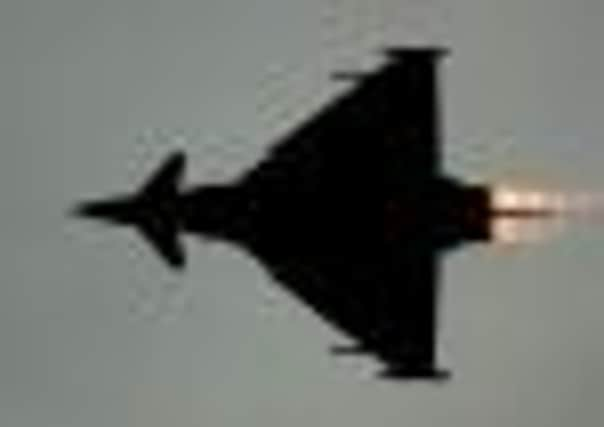Aberdeenshire ‘earthquake’ tremors likely to have been caused by RAF jets


Seismologists at the British Geological Survey in Edinburgh were inundated with calls and on line enquiries from worried householders after they experienced mysterious tremors over a period of almost five hours.
The calls came from people living along a stretch of the Aberdeenshire coast from Aberdeen in the North to the fishing village of Gourdon, near Inverbervie, in the South, reporting strange rumbling noises and claiming that they felt their homes shaking in the darkness. There were even reports of strange vibrations being felt in the village of Kemnay, almost ten miles inland.
Advertisement
Hide AdAdvertisement
Hide AdThe tremors also led to a flurry of postings on various social networking sites with Jonathon Whitehead, one local resident, Tweeting: “I woke up with my bag sprawled out on the floor and pillows everywhere.” Liam Thom wrote on Facebook: “I’m not being funny but Kemnay just had an earthquake. I genuinely felt two tremors - then the Internet went down.”
The scientists at the Edinburgh research centre quickly checked their data and immediately ruled out any evidence of an earthquake hitting Scotland. And last night the finger of blame was being pointed at a combination of RAF jets, possibly Typhoons, breaking the sound barrier on training sorties miles out in the North Sea - and the high pressure system which has caused temperatures to soar across the country.
GlennFord, a seismologist with the British Geological Survey, explained that the centre had received reports on line of a suspected earthquake from 7pm to almost midnight on Tuesday
He said: “It has caused a lot of excitement. We got in this morning and there were a lot of on line questionnaires which had already been filled in by people who thought they had felt an earthquake. We checked our data and there certainly has not been any earthquakes at all.”
And he continued: “The descriptions we were given are very typical of a sonic boom. Sonic booms and small earthquakes have very, very felt similar effects - a loud rumble or a bang sometimes. I can’t say for sure that a sonic boom was the source but I can categorically tell you it wasn’t an earthquake.”
Mr Ford explained: “One interesting piece of evidence is that the reports we received were from people along a 30 kilometre stretch of coastline. And in my 30 years experience of earthquakes, historically what I have seen is that when a plane has gone supersonic over the sea it creates this pressure wave - an invisible wave - which travels towards the coastline and, as it smashes into the coastline, all the energy is absorbed by all the houses and hills.
“Typically aircraft cause sonic booms and if they are on supersonic exercises they may flying about for hours. That is the most likely source of what has happened here.”
The aircraft, he aid, could have been miles out to sea. “The best sonic boom was from Concorde. People in Cornwall and Devon used to set their watches by the boom Concorde when it was supersonic way off the south coast of Ireland. If the atmospheric conditions were correct the sound could travel to Somerset.”
Advertisement
Hide AdAdvertisement
Hide AdAn RAF spokesman at the Ministry of Defence also admitted there was a “strong possibility” that RAF jets on training missions over the North Sea may have been the cause of the mystery vibrations.
The spokesman said: “I suspect it is likely that it was an RAF jet. We have regulations which stop us flying supersonic overland and we adhere to those rules. But we are in the middle of a beautiful anticyclone at the moment and the weather in stunning across the UK. And in an anticyclone noise travels further.
“Therefore if an aircraft did go supersonic over the North Sea the sound will travel further and therefore people might hear it. There may have been more than one aircraft involved. And in a sortie of 45 minutes to an hour they could go supersonic several times during that period. Typhoons would likely go supersonic on most missions.”
He continued: “There is strong possibility it was our guys. It’s all down to this splendid weather are having. Sound travels a long way in the summer when there is high pressure and you are out over the sea.”
A spokesman for Grampian Police said: “We can confirm we received a number of reports from members of the public after feeling ‘tremors’ during Tuesday evening. The calls related to the period between 8.45pm and 11.15pm from areas around and along the coastline south of Aberdeen including Torry, Portlethen, Stonehaven, St Cyrus, Inverbervie and Gourdon.
“There were no reports of any injuries or damage as a result of the incident.”